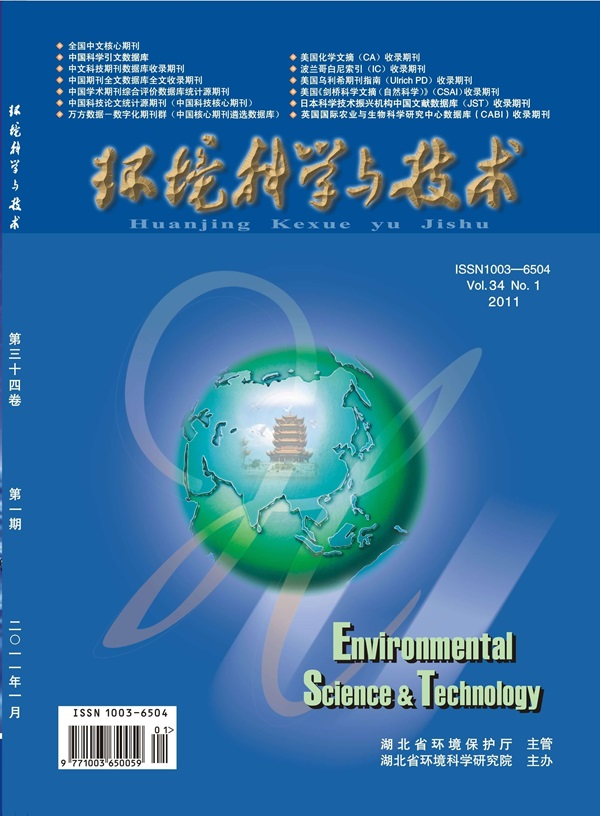Impact of Molecular Structure on Secondary Organic Aerosol Formation from Aliphatic Carbonyls.
IF 10.8
1区 环境科学与生态学
Q1 ENGINEERING, ENVIRONMENTAL
引用次数: 0
Abstract
Aliphatic carbonyls widely exist in source emissions and the atmosphere, serving as secondary organic aerosol (SOA) precursors. Molecular structure including carbon number and functional groups influences SOA formation. However, limited research was conducted on the vastly different SOA yields among aliphatic carbonyls, and the impact of the molecular structure remains unclear and controversial. In this study, 11 aliphatic carbonyls were photooxidized to study the SOA formation and gas-phase products in an oxidation flow reactor (OFR). The maximum SOA yields of C15 and C13 straight-chain carbonyls are 0.41-0.52 and 0.18-0.23, lower but within a comparable range with long-chain alkanes, whereas those for C8-C10 carbonyls are less than 0.04. Aliphatic carbonyls with more carbon have significantly higher SOA yields, accompanied by additional multigenerational products. The SOA yield of n-aldehyde is moderately higher than that of n-alkan-2-one with the same carbon number, due to the enhanced formation of long-chain acids with lower volatility than dicarbonyls. The saturated cyclic structure increases the SOA yield by forming more multifunctional products with additional aldehyde groups upon ring-opening, whereas the branched structure easily fragmented and decreased the SOA yield. This study highlights that the aliphatic carbonyls with more carbon numbers and a cyclic structure with less branching may have higher SOA yields.分子结构对脂肪族羰基形成二次有机气溶胶的影响。
脂肪族羰基广泛存在于源排放物和大气中,是二次有机气溶胶(SOA)的前体。分子结构包括碳数和官能团影响SOA的形成。然而,关于脂肪族羰基之间的SOA产率差异的研究有限,并且分子结构的影响仍然不清楚和有争议。在本研究中,11个脂肪族羰基在氧化流反应器(OFR)中进行光氧化,研究SOA的形成和气相产物。C15和C13直链羰基的最大SOA产率分别为0.41-0.52和0.18-0.23,低于长链烷烃,但在相当范围内,而C8-C10羰基的最大SOA产率小于0.04。含有更多碳的脂肪族羰基具有明显更高的SOA产率,并伴随着额外的多代产品。正醛的SOA产率略高于相同碳数的正烷烃-2- 1,这是由于长链酸的生成比二羰基的挥发性更低。饱和环状结构通过在开环时形成更多醛基的多功能产物提高了SOA收率,而支链结构容易破碎,降低了SOA收率。这项研究强调,具有更多碳数和较少分支的环状结构的脂肪族羰基可能具有更高的SOA产率。
本文章由计算机程序翻译,如有差异,请以英文原文为准。
求助全文
约1分钟内获得全文
求助全文
来源期刊

环境科学与技术
环境科学-工程:环境
CiteScore
17.50
自引率
9.60%
发文量
12359
审稿时长
2.8 months
期刊介绍:
Environmental Science & Technology (ES&T) is a co-sponsored academic and technical magazine by the Hubei Provincial Environmental Protection Bureau and the Hubei Provincial Academy of Environmental Sciences.
Environmental Science & Technology (ES&T) holds the status of Chinese core journals, scientific papers source journals of China, Chinese Science Citation Database source journals, and Chinese Academic Journal Comprehensive Evaluation Database source journals. This publication focuses on the academic field of environmental protection, featuring articles related to environmental protection and technical advancements.
 求助内容:
求助内容: 应助结果提醒方式:
应助结果提醒方式:


